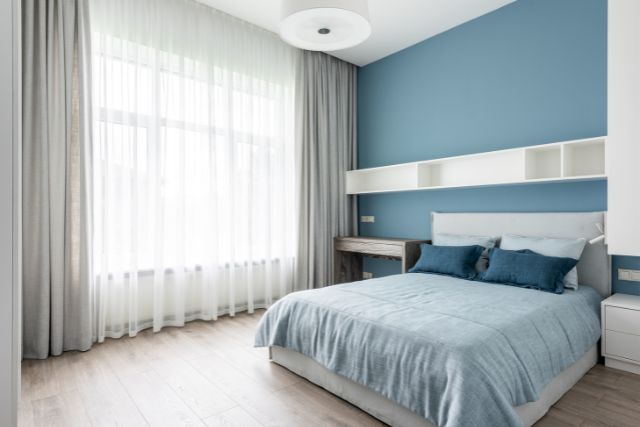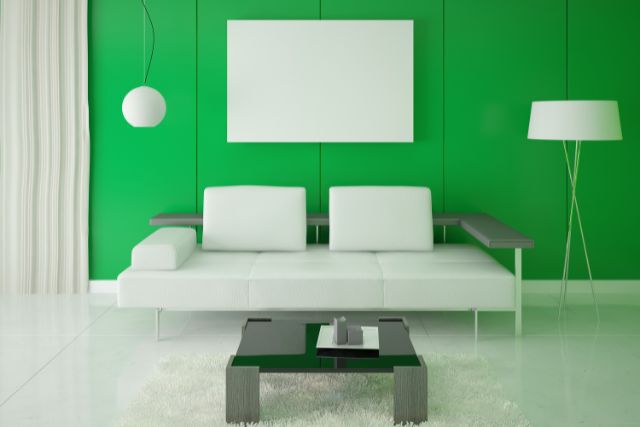Embarking on the quest to find the perfect paint colour can feel like navigating through a maze with endless turns. But fear not!
This comprehensive guide is your trusty map, leading you to the treasure that is the ideal shade for your Australian home.
Introduction to Paint Colours
Let’s start at the beginning. The world of paint is rich with potential, teeming with hues that can transform a space from blah to breathtaking. Understanding the basics is your first step.
The Psychology of Colour
Colours aren’t just pretty to look at; they’re also packed with emotional power. Blue can be calming, red invigorating, and yellow uplifting.
Choosing a paint colour is partly about tapping into the mood you want to foster in your space.

Understanding Colour Theory
Colour theory isn’t just for artists. It’s essential for anyone looking to get their paint choice right.
Colour theory is foundational in selecting paint colours that complement your interior design. It revolves around the colour wheel, divided into primary, secondary, and tertiary hues.
Complementary colours, which sit opposite each other on the wheel, offer vibrant contrasts perfect for bold statements.
Analogous colours, which are next to each other, create serene and comfortable designs. Complementary colours bring balance, while analogous hues offer a harmonious feel.
Understanding these relationships can help you create a balanced and cohesive colour scheme for your home.
Latest Trends in Paint Colours in Australia
While classics like crisp whites and soft neutrals never go out of style, staying attuned to the latest trends can give your home a modern edge.
Right now, earthy tones and vibrant greens are capturing Australian hearts and homes.
Before You Begin: Preparing for Your Colour Journey
Choosing the right paint colour isn’t something to rush. A bit of preparation can make all the difference in achieving a result you’ll love for years to come.
Assessing Your Space and Lighting
Light plays a huge role in how colours look in a room. A shade that looks fabulous in a sunny living room might not work as well in a dim bedroom.
Observing your space’s natural and artificial light at different times of day can guide your palette choice.

Considering Your Home’s Architecture and Style
Your home’s design should influence your colour choice. A modern minimalist home might call for bold, contrasting colours, while a heritage cottage could be suited to softer, more traditional shades.
Gathering Inspiration
Start a collection of images that inspire you. Whether it’s a sunset, a piece of fabric, or a photograph from your favourite magazine, these can be great starting points for your colour scheme.
Choosing the Right Paint for Your Space
With a solid understanding of your space and inspiration in hand, you’re ready to start zeroing in on your perfect paint colour.
Understanding Different Types of Paint Finishes
The finish of your paint can dramatically affect the overall look of a room.
- Matte or flat finishes offer a non-reflective, smooth appearance that hides wall imperfections but can be difficult to clean.
- Eggshell and satin finishes have a slight sheen and are more durable and washable, making them ideal for living rooms and bedrooms.
- Semi-gloss and gloss finishes are highly durable and easy to clean, perfect for kitchens, bathrooms, and areas that see a lot of traffic or moisture.
From matte for a sophisticated look to glossy for durability and shine, each finish has its place and purpose.
How to Use Colour Swatches Effectively
Swatches are your best friends in the paint selection process. Affixing them to your wall and observing them at different times of the day can prevent surprises after the paint has dried.
Navigating Colour Palettes
Feeling overwhelmed by choices? Start with a base colour you love, and build your palette from there. Remember, harmony in your colours can bring a room together beautifully.
Creating a cohesive colour palette starts with choosing a base colour that sets the mood for your space. From there, select complementary or analogous colours to create a sense of balance and harmony.
Don’t forget to consider the 60-30-10 rule: 60% of the room should be your dominant colour, 30% a secondary colour, and 10% an accent colour. This approach helps create depth and interest in your space.

Choosing Colours for Different Rooms
Each room has its own vibe. A peaceful blue might be perfect for a bedroom, while a vibrant yellow could bring energy to a kitchen. Consider the function and feel you’re after in each space.
Colour and Your Lifestyle
Your lifestyle should play a key role in your colour choices. Let’s make sure your walls not only look great but also match your daily life.
Paint Colours for Busy Families
Busy families need durable, easy-to-clean walls. Satin or semi-gloss finishes in darker shades or vibrant tones can hide the inevitable scuffs and marks of a lively household.
Eco-Friendly and Non-Toxic Paint Options
Health and sustainability are paramount. Thankfully, there are plenty of eco-friendly paint options that are safe for your family and the planet.
Making Small Spaces Appear Larger
Light colours and cool hues can work wonders in making a small room feel more spacious. A touch of mirror-like gloss can also enhance this effect.
The Australian Perspective
Australia’s unique landscape and light influence how colours look and feel in our homes.
Let’s embrace our surroundings to make colour choices that resonate.
Inspiration from the Australian Landscape
From the red earth of the Outback to the lush greens of the Daintree, Australia’s natural palette is a fantastic source of inspiration for your home.

Colours for Australian Light and Climate
The intense Australian light affects colours in unique ways. Bright, vibrant shades can become overwhelming, while softer, muted colours might just hit the right note.
Supporting Australian Paint Brands
Choosing local brands not only supports the Australian economy but also ensures your paint is formulated for our specific climate and lighting conditions.
Practical Tips and Tricks
Ready to get started? Here are some practical tips to take you from planning to perfection.
Test Colours in Your Home
Invest in sample pots. Painting large patches on your walls can save you from a costly mistake. Observe the colour at different times of the day and in various lighting conditions.
Mix and Match Colours
Don’t be afraid to mix shades or create accent walls. A bold choice in a small area can add a lot of personality.

How to Deal with Colour Regret
If you end up disliking your choice, remember, it’s just paint. Changing it might be a hassle, but it’s always an option.
Professional Help and Resources
Sometimes, a bit of expert advice can make all the difference in achieving the look you desire.
When to Consult a Colour Consultant
If you’re feeling stuck, a professional colour consultant can provide valuable insights and suggestions tailored to your space and preferences.
Utilizing Digital Tools and Apps
Today’s technology offers virtual tools that can help you visualize your space in different colours, making it easier to commit to your choice confidently.
Conclusion
Congratulations! You’re now armed with the knowledge and tools to choose the perfect paint colour for your Australian home.
Remember, the best choice is one that makes you happy every time you walk into the room. Happy painting!





